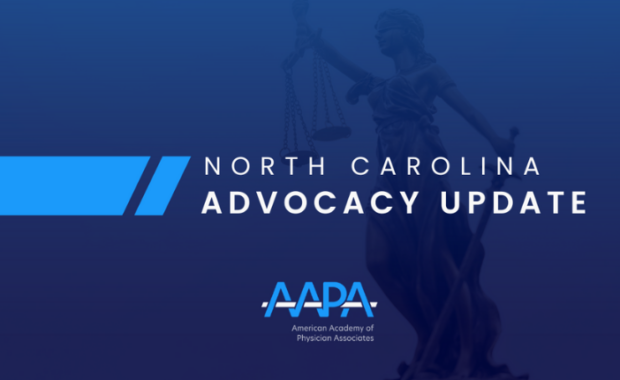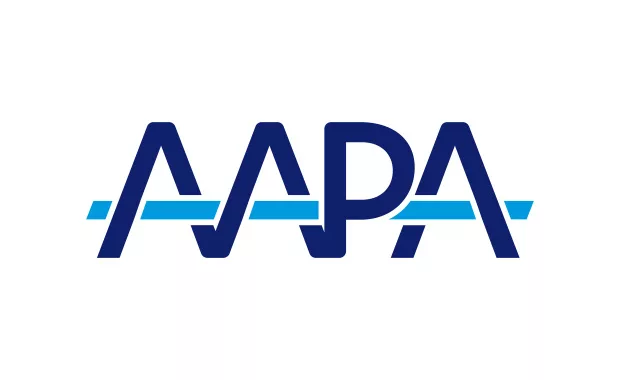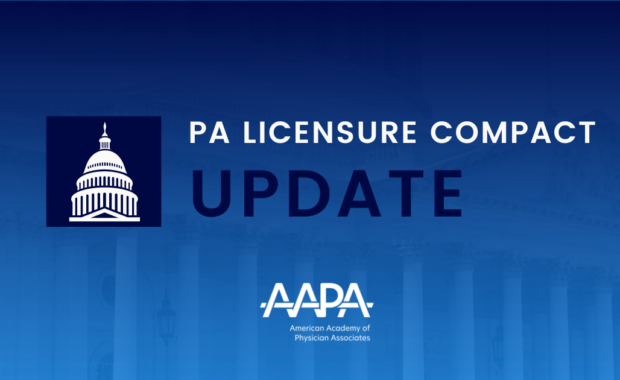PAs Celebrate a Year of Unprecedented Wins at the State Level
States Move Core Elements of OTP Forward in 2019
January 28, 2020
State legislative wins in 2019 set in motion a positive shift for the PA profession. The profession saw the first state to enact legislation eliminating the requirement for PAs to have an agreement with a physician (or other provider) in order to practice – a core element of AAPA’s optimal team practice (OTP) policy. While additional states achieved other elements of OTP. Numerous states also modernized PA practice by shifting from a supervisory model to a collaborative one, eliminating physician responsibility, removing the requirement for a practice agreement, or adding PAs to key areas of laws and regulations outside of the PA practice act (like medical orders for life-sustaining treatment or mental health provisions).
Optimal Team Practice
In April, PAs in North Dakota, and across the country, celebrated the enactment of legislation which eliminated the requirement that a PA have a written agreement with a physician in most settings in the state in order to practice. Among other changes, the legislation also made PAs responsible for the care they provide, removed all references to “supervision,” and defined PA scope of practice to align with AAPA’s Model State Legislation for PAs.
North Dakota wasn’t the only state with an OTP-related win in 2019. West Virginia eliminated the requirement for PAs who work in hospitals to have an agreement with specific physicians in order to practice. The legislation also eliminated ratios in hospitals, allowed for scope to be determined at the practice level for PAs practicing in hospitals, and removed physician responsibility for care provided by a PA without physician involvement for all PAs in the state. And Colorado added a second PA to the medical board, as well as added a PA to the licensing commission. While Idaho created a PA seat on the Idaho Medical Board.
Collaboration
The year also saw five states repeal the use of the word “supervision” in favor of “collaboration” to define the PA-physician relationship. Rhode Island overhauled the state’s PA practice act by not only shifting from supervision to collaboration, but also by removing physician responsibility for PAs, eliminating practice agreements (a physician must be available for collaboration at all times), allowing PA scope of practice to be determined based on the PA’s skills, education, and training, and adding a third PA seat to the Rhode Island Board of PAs.
Other states with major legislation enacted in 2019 that included replacing supervision with collaboration were Indiana, Missouri, North Dakota (in instances where PAs and physicians are still required to have a relationship), and Virginia. In total, 11 states and the District of Columbia now use a term other than “supervision” to describe PA practice.
Key Elements
Numerous states made significant improvements to PA practice that were not related to OTP or collaboration. Currently, eight states have all 6 Key elements.
California, among numerous improvements, repealed the requirement for chart review or counter signature – these determinations are now made at the practice level. Hawaii also achieved a chart review victory by repealing the 100% chart review requirement, allowing chart review determinations to be made at the practice level for PAs with more than one year of experience.
In addition, four states made ratio improvements: Arizona, increased the ratio from 4 PAs per physician to 6; Colorado increased from 4 to 8; Idaho increased from 3 to 4; and West Virginia eliminated ratios in hospitals.
Other Important Victories
The year also saw many states achieve other important victories. Two states, Utah and New Hampshire, passed harmonization acts. Utah added PAs to 62 sections of statute where PAs were previously excluded. New Hampshire added PAs to various statutes concerning mental health services, involuntary emergency admissions to mental health facilities, and insurance coverage.
Other advocacy wins included:
- Four states added PAs to the list of providers who can execute and sign orders for life-sustaining treatment;
- Four states added PAs to those practitioners who can certify for medical cannabis;
- Nine states made MAT-related improvements;
- Three states created income tax credits for PAs;
- Four states streamlined licensure requirements for PAs; and
- Five states made improvements for PAs in telemedicine.
In total, more than 115 PA-positive legislative or regulatory changes were made across 45 states in 2019. The 2020 legislative session is already off to a fast start, with numerous states introducing legislation containing components of OTP, shifts from supervision to collaboration, or seeking Key Elements.
For more information, please visit AAPA State Advocacy.
Thank you for reading AAPA’s News Central
You have 2 articles left this month. Create a free account to read more stories, or become a member for more access to exclusive benefits! Already have an account? Log in.



